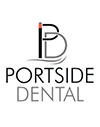When you hear the term “Botox,” your mind might automatically conjure images of smooth foreheads and youthful-looking faces. While Botox has long been associated with the field of cosmetic dermatology, its applications have expanded far beyond the realm of wrinkles and fine lines. One such field that has witnessed remarkable advancements is dentistry. Yes, you read that right – Botox in dentistry!
In this comprehensive guide, we will explore the transformative power of Botox in dentistry, focusing on how it can enhance your smile and improve your overall oral health. Whether you’re seeking relief from temporomandibular joint disorder (TMJ), looking to address gummy smiles, or desiring a non-surgical facelift, Botox has emerged as a game-changer in the dental industry.
So, what exactly is Botox, and how does it work in the context of dentistry?
What is Botox?
Before delving into the specific applications of Botox in dentistry, it’s crucial to understand the basics of this remarkable substance. Botox, short for botulinum toxin, is a neurotoxic protein derived from the bacterium Clostridium botulinum. It works by temporarily paralyzing or relaxing targeted muscles, thus providing therapeutic benefits in various medical and dental conditions.
How Botox Works?
When administered in controlled doses by a qualified dental professional, Botox acts as a muscle relaxant. It inhibits the release of acetylcholine, a neurotransmitter responsible for muscle contractions, thus preventing excessive muscle movements. By selectively targeting specific facial muscles, Botox can achieve remarkable results in both aesthetic and functional aspects of dentistry.
Applications of Botox in Dentistry
Botox has revolutionized the field of dentistry by offering a range of transformative treatments that go beyond traditional dental procedures. Let’s take a closer look at some key applications of Botox in dentistry and the benefits they offer.
Temporomandibular Joint Disorder (TMJ)
Temporomandibular joint disorder (TMJ) is a condition characterized by jaw pain, muscle tension, and limited jaw movement. Botox injections can provide much-needed relief by relaxing the overactive jaw muscles, reducing pain, and improving jaw functionality. This non-invasive treatment option has proven to be highly effective in managing TMJ symptoms and improving patients’ quality of life.
Gummy Smile Correction
A gummy smile, where a significant portion of the gums is visible when smiling, can cause self-consciousness and affect one’s confidence. Botox can be used to correct a gummy smile by targeting and weakening the muscles responsible for elevating the upper lip excessively. By carefully administering Botox injections, dentists can create a more balanced and aesthetically pleasing smile.
Bruxism Treatment
Bruxism, or teeth grinding, can lead to a range of dental issues, including worn-down teeth, jaw pain, and headaches. Botox offers an effective solution by relaxing the muscles responsible for grinding and clenching. By injecting Botox into specific muscle groups, dentists can reduce the intensity and frequency of bruxism episodes, preserving dental health and preventing further damage.
The Benefits of Botox in Dentistry
Non-Surgical Approach
One of the significant advantages of Botox in dentistry is its non-surgical nature. Unlike invasive procedures, Botox injections are minimally invasive and require no downtime or recovery period. Patients can resume their daily activities immediately after the treatment, making it a convenient option for those with busy schedules.
Enhanced Aesthetics
Botox can enhance the aesthetic appeal of your smile by reducing the appearance of fine lines, wrinkles, and asymmetries. By strategically targeting specific facial muscles, dentists can create a more youthful and rejuvenated appearance, boosting self-confidence and overall satisfaction with your smile.
Improved Oral Health
Botox treatments can have a positive impact on your oral health by addressing various dental conditions. Whether it’s relieving TMJ-related pain, preventing bruxism-related tooth damage, or correcting gummy smiles, Botox can improve your overall oral health and contribute to a healthier, more comfortable smile.
Botox in dentistry has revolutionized the way we approach oral health and dental aesthetics. With its transformative applications, this innovative treatment option offers solutions to various dental concerns, from TMJ disorder to gummy smiles and bruxism.
Consult with your dentist to determine if Botox treatments are suitable for you. To access Botox treatment in Newport, Victoria, look no further than the expertise of Dr. Meredith Metin. As a highly skilled dentist, Dr. Metin offers outstanding Botox treatments that can enhance your smile and rejuvenate your appearance.
Related Articles :
Dental Implants – Risks, Advantages, and Precaution
Sleep Dentistry – Newport: Enhancing Your Dental Experience


You have remarked very interesting details! ps decent internet site.Blog monetyze